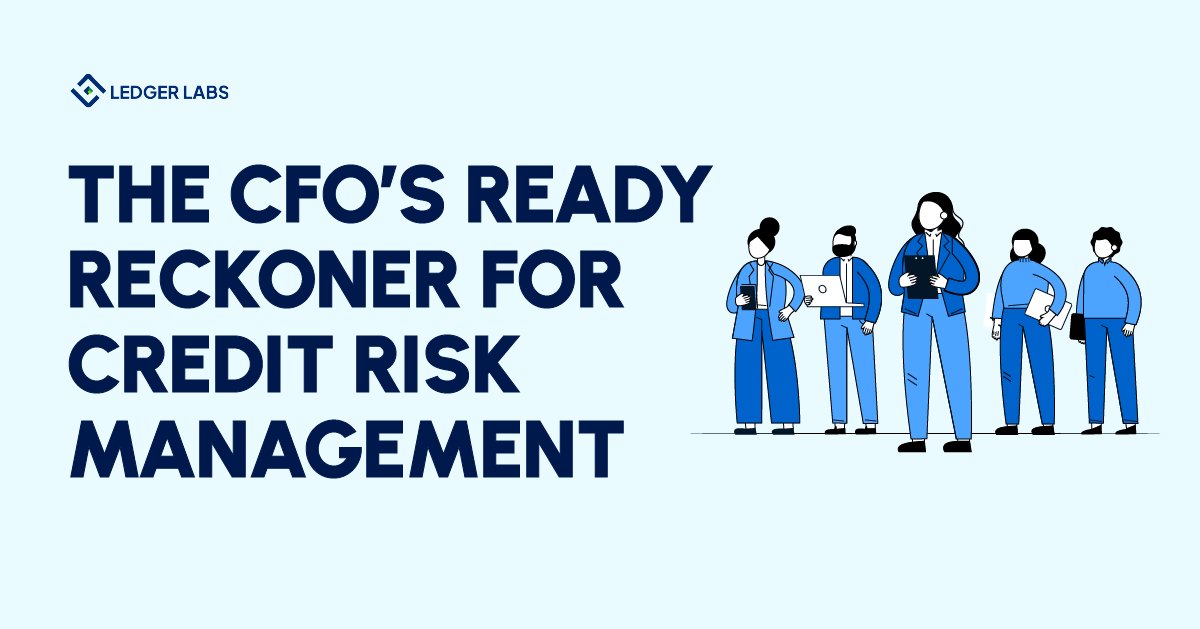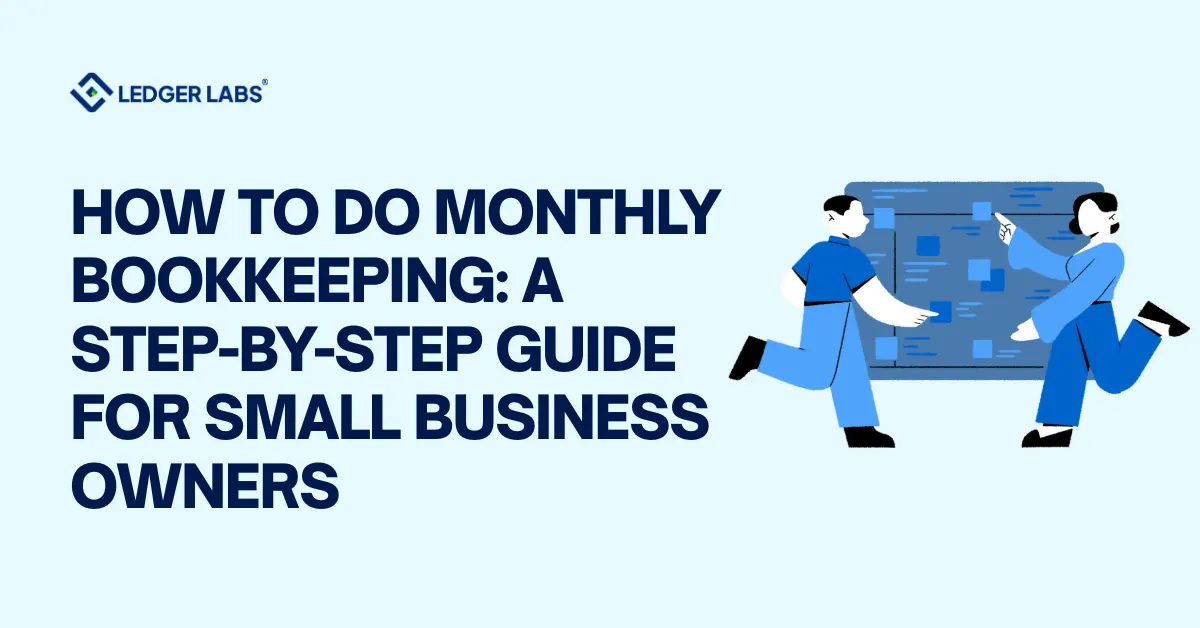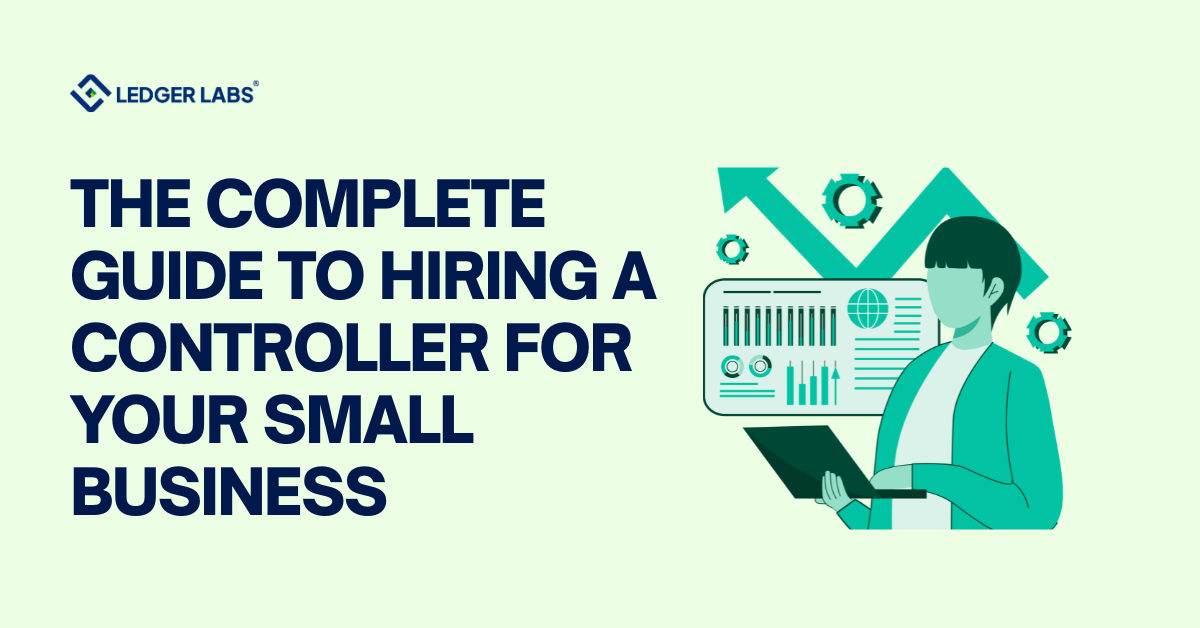1. Fraud risk leads to losses through identity theft, falsified financial data, or deceptive transactions, significantly impacting financial stability and trust.
2. Default risk occurs when borrowers fail to meet payment obligations, leading to substantial financial losses for lenders.
3. Credit spread risk highlights widening bond yield differences, signaling issuer creditworthiness declines and impacting market value.
4. Concentration risk stems from a lack of diversification, increasing vulnerability to sector or borrower-specific downturns.
5. Economic downturns, industry trends, and high interest rates amplify credit risk, making borrower financial stability crucial.
Has it ever occurred to you how businesses protect themselves from financial hiccups that come with extending or lending credit? This is where credit risk management comes into the picture. Mostly, it is all about recognizing, measuring, and handling the risk that occurs with financial transactions.
Now, when we talk of handling risks, what does it entail? Moreover, what role does it play in a company? These are questions that come up frequently. The good news is that we have all the answers you have been looking for! So, without further ado, let’s investigate in depth what credit risk management is all about.
Credit risk management is the process of assessing and mitigating the risks linked to the amount lent, while keeping a vigilant eye on the bank’s reserves to be used at any moment. Furthermore, risk management assists lenders or financial institutions in making sound decisions.
Why is Credit Risk Management Important for a Chief Financial Officer (CFO)?
The Chief Financial Officer (CFO) is basically the financial gatekeeper of your business. The CFO, alongside general management, typically must take charge of credit management. This is imperative because the effect of receivables on cash flow and profitability is highly important, as they are one of the primary concerns of the CFO.
As a result, it is vital for the CFO to lead the credit management team and keep a close eye on the processes. They are in charge of ensuring your company’s financial well-being as well as its ongoing cash flow. Ever heard the saying that goes, “Money makes the world go round”? Now, for a Chief Financial Officer (CFO), tackling the credit risk is more like keeping the money moving safely and, more importantly, smartly. Read when should you hire a CFO?
Understanding the CFO’s Daily Role
The Chief Financial Officer (CFO) is responsible for setting the strategy of the organization, and, usually, delegating routine operations to the credit manager alongside their team. By all means, they also remain strictly involved in overseeing the operational management of their direct reports (n – 1) level. In essence, this is to make sure that the policies established by the senior management are adhered to.
In fact, the CFO is also equally responsible for setting targets for Days Sales Outstanding (DSO), bad debt percentage, and the percentage of overdue accounts, gradually aligning them with the company’s business plan and goals.
The CFO is responsible for setting targets for Days Sales Outstanding (DSO), the percentage of overdue accounts, and the percentage of bad debts, aligning these with the company’s business plan. According to the approval matrix and the importance of the business implications, the CFO is also consulted in cases that depart from standard operating procedures.
Recommended: CFO or Controller, who is right for you?
Understanding Credit Risk
Credit risk is basically the potential for loss when a borrower fails to make timely payments on any form of debt. In other words, credit risk means the looming danger that a lender might not be getting the principal amount as well as the interest they are owed. As a result, cash flow can potentially be disrupted, and the costs to recover the funds can become much higher.
In order to mitigate the credit risk, several lenders start closely examining different factors that may indicate that the borrower may not be able to repay the sum. One excellent example of this case scenario is when lenders root down the existing debts the individual has and balance them with their income levels.
While it is impossible to foretell who can default on their obligations, there’s no doubt that credit risk assessment and management can still ease the impact of such losses. Consequently, lenders and investors are compensated for taking on this credit risk by the interest they receive from debt issuers and borrowers.
4 Types of Credit Risk
There are four major types of credit risks, and it is important that you know about all of them in detail. So, without procrastinating any longer, let’s get straight into it:
- 1) Fraud Risk: This is basically the potential loss that a company or a person could possibly face due to certain deceptive and fraudulent actions. Besides, this is a type of risk that is particularly prevalent in financial transactions and involves several forms of deceit that you will be surprised to know more about. The list includes but is not limited to, falsification of financial information, identity theft, and illegal forms of transactions that aim to retrieve assets from you in a shady way.
Is your accounting system as secure as you think?
- 2) Credit Spread Risk: Let’s break it down in a simple manner. Credit spread risk is basically the chance that a bond’s yield spread, which is the difference between its yield and the yield of a benchmark security, will grow as a result of the issuer’s declining creditworthiness. Government bonds are a perfect example in this case. The bond’s market value may start to drop as a result of this widening spread, gradually suggesting a higher risk of default. Read more about bonds and other short-term investments here.
- 3) Default Risk: This is simply the possibility that the borrower won’t be able to make the necessary payments on their debt obligation. This is widely a risk to the lender because they probably will not be receiving the principal amount and the interest payments along with it, gradually leading to substantial financial losses. Want to know how to increase your accounts receivable collection in 2025? Check out this blog.
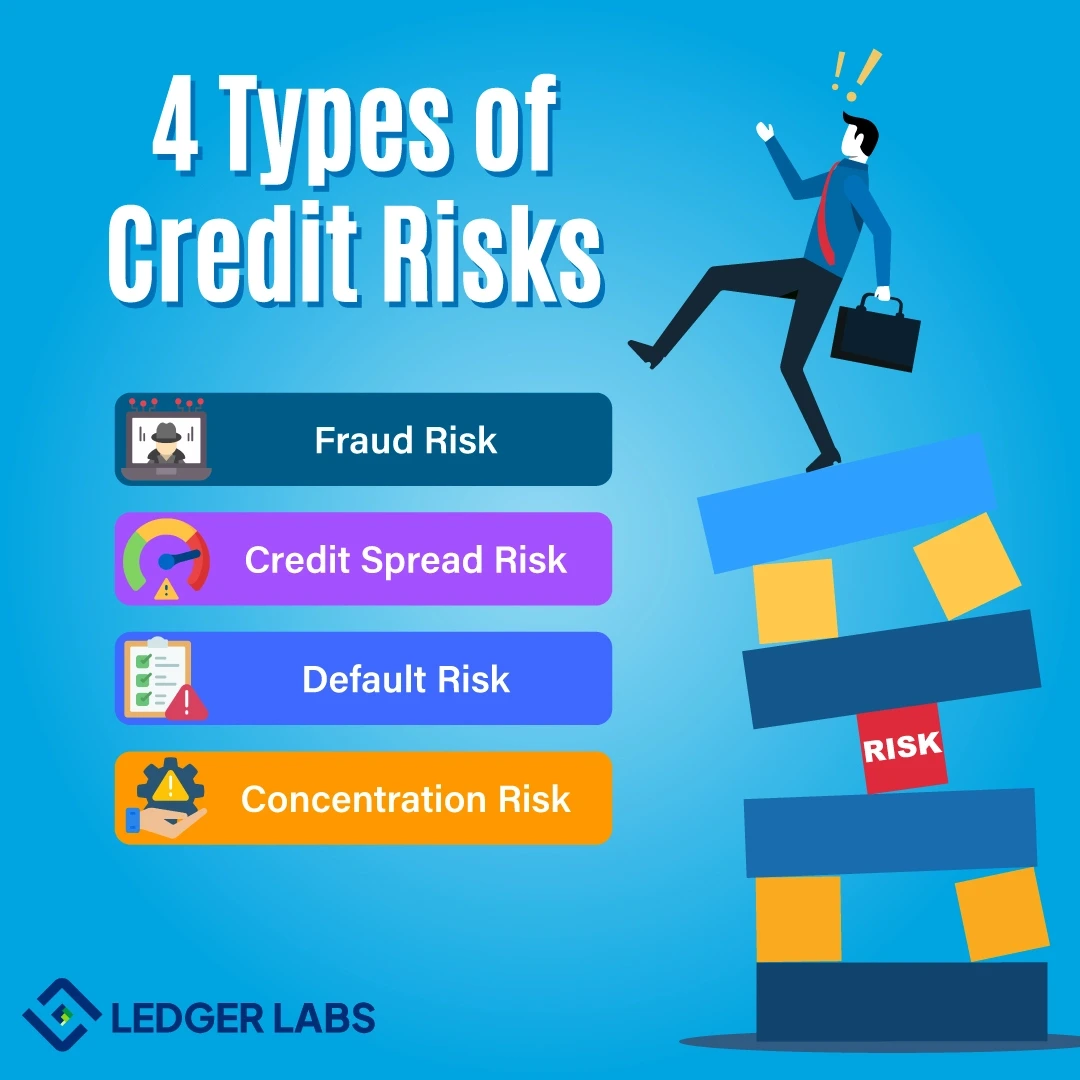
- 4) Concentration Risk: This can happen due to the lack of diversification in your investment or loan portfolios. Most essentially, this happens when a significant portion of a portfolio has been invested in just one sector, asset, market or borrower. This, in turn, traps the lender or investor in a very vulnerable state to face losses in case their investment suddenly faces financial distress.
5 Factors Affecting Credit Risk
There are several factors in hand that can impact credit risk, influencing the chances of borrowers defaulting. Let’s look closely at them:
- 1) Economic conditions: This is mainly the umbrella term we use in relevant cases. That means, the general health of the economy is highly imperative to consider here. The risk of default steadily rises with the bar as an economic downturn or recession surfaces. On the flip side, the credit risk is usually lower if we are part of a strong economy.
- 2) Industry trends: Certain industry trends can undoubtedly impact credit risk. Furthermore, industries that are experiencing downturns, technological disruptions, or regulatory changes can definitely face a higher risk of default within those sectors.
Watch out for these accounting trends in 2025!
- 3) Interest rates: This is one of the most integral areas to look at when you are considering credit risks! The level of interest can undeniably impact credit risk. Often higher interest rates push the cost of borrowing, gradually resulting in higher default rates.
- 4) Financial well-being of the borrower: You should always look at whether your borrower has a good financial stand. This can include examining their income levels, debt load, and current cash flow, among several other factors. If only they have a strong financial position, only then can you know that it suggests a lower risk of default. Thus, look at everything substantial when you still have time.
- 5) Global events: Certain events including geopolitical tensions, worldwide economic sanctions, or pandemics create an environment replete with uncertainties. This is one of the many reasons why it impacts credit risk. The worst thing? These can be unpredictable.
Importance of assessing the creditworthiness of borrowers
If you want to mitigate credit risks, then you have to determine the creditworthiness of borrowers. Now, this can be anything, such as, understanding the borrower’s ability to repay the debt. In simple words, this can help in making sound lending decisions, reducing the likelihood of defaults, and simultaneously guaranteeing the financial stability of lending institutions.
Key metrics and ratios to evaluate creditworthiness ratios
- 1) Credit scores: This is simply a numerical representation based on a brief analysis of an individual’s credit files, showing whether they are creditworthy.
- 2) Debt-to-income ratio: As the name suggests, this measures a borrower’s monthly debt payments in relation to their gross monthly revenue. This is helpful if you are looking at their debt burden.
- 3) Liquidity ratios: This can show you whether a borrower can settle his present debts without really raising any external capital. Certain ratios, such as current ratio or quick ratio, can give you a clear sight into financial stability.
Utilizing Credit Ratings and External Sources
This is where the help of credit ratings comes into use. Credit ratings, usually offered by rating agencies, provide an independent examination of a borrower’s creditworthiness.
Establishing Credit Risk Tolerance and Policies
When you try to determine credit risk tolerance, you must align it with the overall risk appetite the company has. In simple terms, this is basically about the level of risk the company is prepared to take in pursuit of the goals and aspirations it has set. This is where you need to understand the company’s financial capacity, market situation, and strategic goals.
Developing the Credit Risk Management Framework and Policies
Some of the key components include:
- Methods related to risk recognition and its thorough assessment.
- Strategies to mitigate risk (such as collateral requirements, insurance, or guarantees).
- Processes of approving, modifying, renewing, and refinancing credit.
- Detailed analysis of adherence to risk tolerance levels.
On the basis of this, let’s reveal the five major components of a credit risk management framework:
- Risk identification
- Risk measurement and analysis
- Risk mitigation
- Risk reporting and measurement
- Risk governance
Implementing Credit Risk Mitigation Strategies
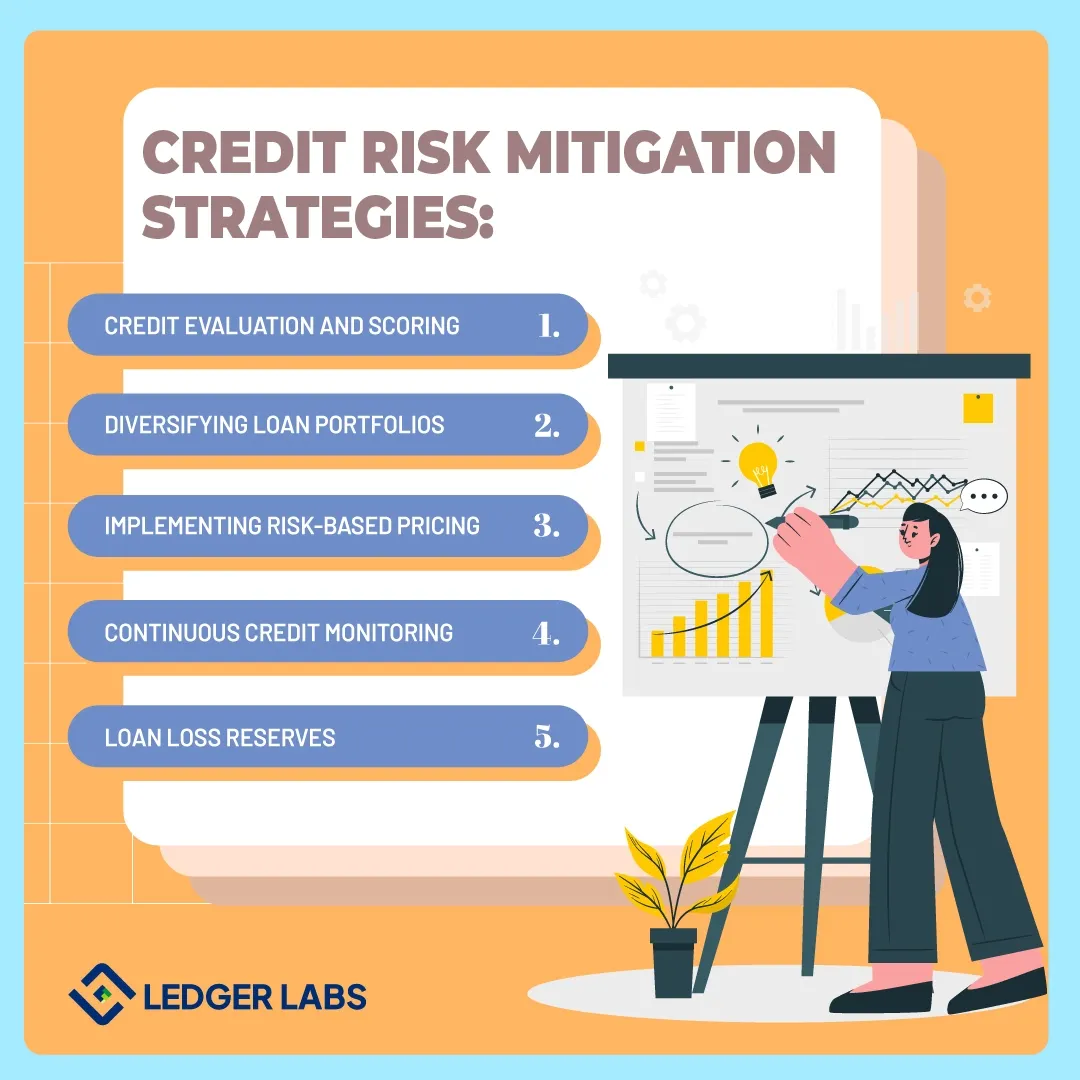
In order to safeguard yourself from potential threats, it’s always a good idea to implement credit risk mitigation strategies. Here is a list of some of the strategies you should keep in mind:
- Credit evaluation and scoring: Several lenders make use of the credit scoring system to evaluate how creditworthy the borrower is. These models generally consider different elements, such as credit history, existing debts, income, helping lenders make sound credit decisions.
- Diversifying loan portfolios: To mitigate the risk of being exposed to just one industry or area, lenders try to distribute their loans across several industries, credit types, and geographic locations. By spreading out investments, you can gradually reduce the impact of economic downturns that could hit some industries harder than others.
- Implementing risk-based pricing: Lenders typically have to apply risk-based pricing strategies after they have adjusted lending terms and interest rates according to the credit risk level of the borrower. At times, a higher interest rate is charged to riskier borrowers, given their history, in order to balance out the risk involved.
- Continuous credit monitoring: In many cases, you need to regularly monitor the credit status of borrowers. In turn, this enables you to spot any early warnings of financial strains. This process typically helps to preempt the likelihood of potential losses.
- Loan loss reserves: There are several lenders who choose to set aside funds for loan loss reserves as a protection shield against potential defaults.
Want help with credit risk mitigation strategies?
Connect with our extensive CFO support network
Credit Risk Management Solutions in Different Scenarios: Short Case Studies
There can be different scenarios for different credit risk cases. Here are some solutions companies took to safeguard themselves from potential defaults.
- Managing Credit Risk During Economic Downturns: During an economic downturn, a retail bank started implementing robust credit assessment criteria and began surveying existing loans. As a matter of fact, they prioritized areas like healthcare that are less affected by the recession, while also taking necessary steps to reduce exposure to high-risk sectors like travel and hospitality. Furthermore, they also started to implement flexible repayment choices for borrowers who have been in financial distress for quite some time. This is a win-win situation because they are able to reduce default rates as well as maintain customer relationships.
- Dealing with Credit Risk in International Markets: A global company that just entered an emerging market dealt with several credit risks because of the unpredictability of the political climate and the unfamiliarity of the regulatory environments. This is when they started to adopt a country-specific approach, wherein they conducted a comprehensive market analysis and adapted their credit policies to certain local conditions.
After they partnered up with local financial experts and institutions, they started to gain more insights into regional credit practices as well. As a result, it helped them make better lending decisions and implement tight risk management strategies.
- Evaluating Risk Associated with New Credit Products or Services: A financial services business launched a new line of credit products for small businesses. In order to handle the inherent risks, they started to host a pilot launch and began collecting data on repayment rates, borrower behavior, among others. Upon collection, they used this information to finetune their credit scoring models particularly for this segment. In addition, they also put in place a dedicated team to keep an eye on the performance of these new products and modify credit policies as necessary to successfully minimize risk.
In Summing Up
A CFO should remember that credit risk management is more than just following general protocols. It is largely about making sound decisions in a world filled with uncertainties. This is basically a way to balance financial risk with the ultimate reward: profit and growth.
Most essentially, understanding and implementing the right strategies is the goal here. Because those who don’t accurately gauge their risks are exposed to intense scrutiny and can experience major financial losses. When you manage your credit risk, you make the right moves to prevent possible missteps.
Looking for more credit risk management answers or general help with your accounting and bookkeeping services? Get in touch with our professionals with more than 12 years of experience. Let’s connect!


